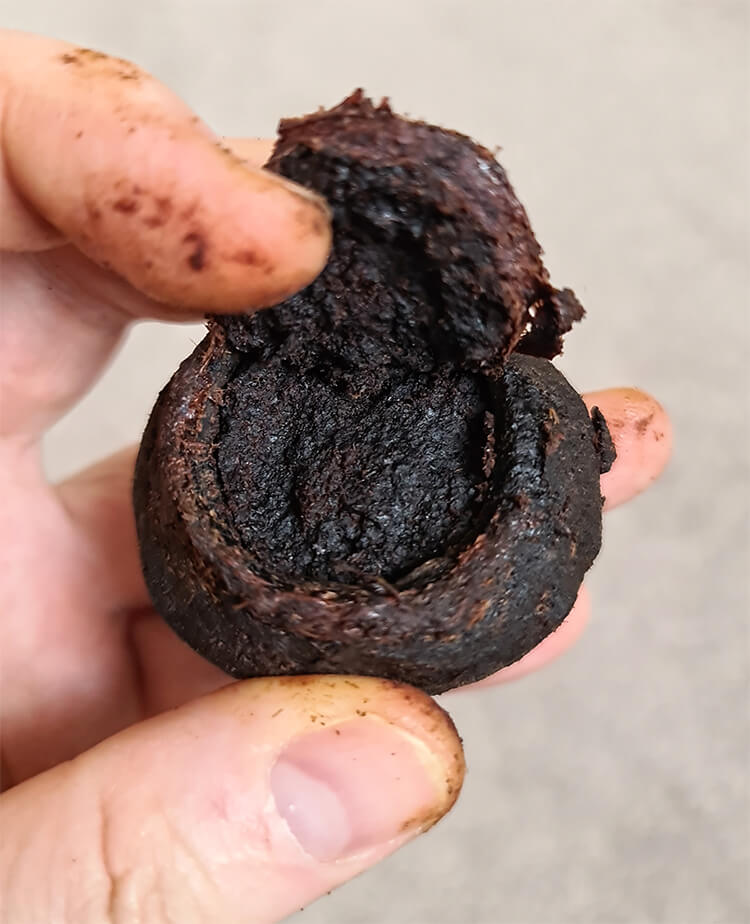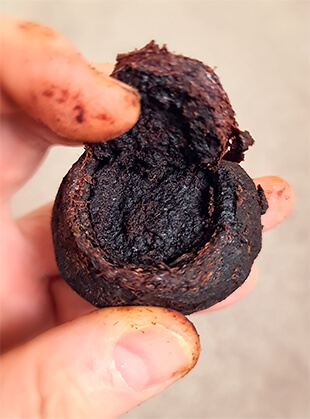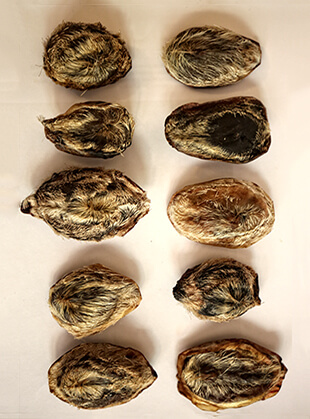Oud Info
Animalics: Deer Musk
Musk scents and materials, also called animalics, are derived from actual animals, and they smell the part. Traditionally the term referred to musk (produced by the musk deer), ambergris (produced by sperm whales), and civet (produced by a weasel-like creature call the civet cat), yet it may also refer to any material which comes from an animal such as castoreum.
The Ethics of Musk
In today’s market, the only sustainable, equitable way to use deer musk in perfume flows through Russia. Other perfume houses resort to Siberean musk not out of choice, but out of necessity. By sourcing our Musk from ancient royal collections, we are able to offer you a glimpse into lost history.
Deer musk is among the rarest and most expensive aromatics in the world. Obviously, as is the case with most precious substances, there are ethical issues associated with musk which must be taken into consideration. There is no species of musk deer that isn’t endangered or extinct as a result of our industry’s demand for musk pods. In the contemporary market, the sale of Siberean musk pods is highly regulated by the Russian government in order to ensure that the wild population of musk deer does not decline. By using bygone musk pods, gifted from the late Sultan Qaboos, Ensar Oud does not contribute to the decline of musk deer populations.
Animalics
Animalics are all associated with purposes integral to life, which gives them inimitable depth and vitality. The pod of the musk deer and the castoreum sack of the North American and European beavers are glands which produce secretions to mark territory and assert virility, while civet paste is the actual secretion – serving the same purpose – of the civet cat. Ambergris stands out from the pack, and is a form of digestive waste expelled by sperm whales.
Animalics in their raw, fresh form are not for everyone. Raw animalics are aromatic mack trucks which hit you with the full visceral force of their fleshy origins – and they smell the part. They need to be tamed, which makes them as much a challenge to work with as they are to acquire. It would be naïve to expect their sublime aromatic majesty without a price to pay. There’s no such thing as a cheap tour de force.
Today, it is virtually impossible to ascertain whether a perfume with the term musk on the label contains any natural musk at all. This problem straddles the lines of aesthetics, quality, and honesty in advertising, i.e., integrity. Natural animalics are the gold standard in perfume, but few are daring enough, or generous enough to actually use them.

Musk in Most Modern Perfumes
Mainstream perfume houses will never indicate whether their musks are natural or not. The justification for this level of opacity is the ‘protection of trade secrets’. Whatever its merit, it is a justification which highlights the industry’s prioritization of economic considerations over those related to quality and aesthetics.
Similarly, the unanimous chorus of industry voices urging us to simply accept synthetic animalics as adequate substitutes for naturals due to animal cruelty and environmental concerns, smacks of corporate cynicism – Even ambergris is lumped with other animalics in this argument, despite the fact that harvesting ambergris poses no threat to sperm whales nor the environment. The potential environmental harm, caused to humans and animals, of the commercial manufacture and distribution of synthetic petrol-aroma-chemicals is far greater. The industry’s consistent opposition to natural animalics, and its curiously opaque approach to ingredients are part of a highly successful marketing strategy to promote a public perfume aesthetic which makes the unavoidable limitations of synthetic aromatics appealing to the public, thereby ensuring a perpetual demand for cheap materials, and profits for chemical manufacturing companies.
History of Synthetic Animalics
When synthetic aromatics emerged in the 19th century, they promised to not merely reproduce, but improve on nature. However, when it comes to animalics, synthetics have and have had severe limitations in realizing that promise. Synthetic animalics – being chemically simpler and relatively more concentrated – lack the depth and complexity of their natural analogues. They tend to be dull, sterile, caustic, and overpowering versions of the originals. Differences in cost aside, they make for conspicuous and therefore poor substitutes. Current musk, civet, and ambergris synthetics suffer from this limitation. Due to such limitations, few perfumers before the 1920’s would work with synthetics. Consumers had no interest in them – as the poor commercial performance of Guerlain’s Jicky in 1889 attests.
Fine perfumes up to the beginning of the 20th century were simple, subtle compositions where one floral note took center stage. All synthetics were seen as caustic and overpowering and those without natural analogues were seen as ambiguous and meaningless. The prevailing aesthetic of the time was one which saw beauty firmly grounded in nature.
Around 1910, when formidable perfume houses such as Houbigant incorporated chemical laboratories into their perfume development, perfumers began to seriously look at the economic advantages of synthetics for mass markets in order to pursue aggressive expansion. A decade later, following significant developments in communication, manufacturing, and chemistry, along with the emergence of avant-garde art movements, fragrances with significant amounts of synthetics began to enjoy greater acceptability. Beauty was, for many, decoupled from nature or even meaning.
By the mid–1920’s, in the wake of the success if Chanel No 5, it became clear to marketers that synthetics with no natural analogs could be used to effectively create unique associations between concepts and brands in ways that the familiar and easily mimicked naturals could not. The hitherto scorned synthetics suddenly gained unique commercial value.

Synthetic Aesthetics
It is therefore unsurprising that, today, the dominant aesthetic of the perfume industry is, exceptions aside, a fantastically prurient one which celebrates sterility as vitality, and artificiality as creativity. Synthetics are a ubiquitous fact of life, but attitudes are changing. There is a growing renaissance recognizing the beauty of the natural world. Much of the 20th century’s hubris and romance towards synthetics has given way to a sober awareness of their risks and costs. The market for natural and organic products is now part of the mainstream as a result of a broader cultural rejection of the artifice of the 20th century. In the 21st century, synthetics are everywhere but seldom will their marketers claim they are equal or superior to naturals. This is particularly true of the food and personal care consumables industries.
Except in the world of fragrance.
It’s almost Orwellian. With fragrance houses releasing perfumes titled “Molecule One” or better yet, “Synthetic Jungle”, one can assume this is an industry stuck in it’s ways. Just as Exxon Mobile will never sell renewable energy en masse, these fragrance houses will never revert to natural musks. It simply doesn’t fit into their profitable large-scale business model. It’s up to small artisan houses, such as Ensar Oud, to reclaim the mantle, and push the art of perfume into the 21st century using natural, real musks.
At Ensar Oud, all of our deer musk and ambergris is sourced from the late Sultan Qaboos of Oman. This royal provenance assures unmatched quality, and more importantly, scarcity. No other atelier has access to such an abundance of Tonkin musk, Kashmiri musk, Mongolian musk, Tibetan Musk, and ancient ambergris. Sadly, no atelier ever will, as these deer species are all either protected, or extinct.






